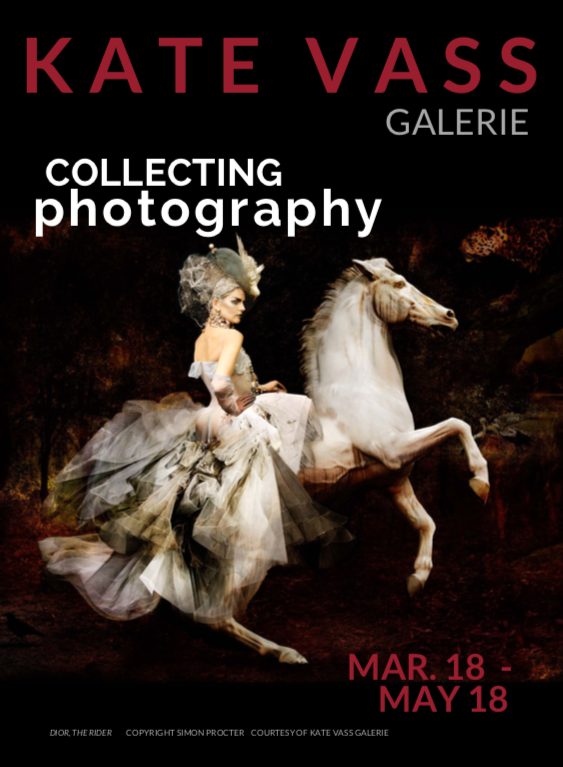 Image 1 of 1
Image 1 of 1


Collecting Photography
KATE VASS GALERIE QUARTERLY BOOKLET | 2ND ED
MAR. 18 - MAY 18
In this edition of the Kate Vass Galerie quarterly magazine we discuss the rewards of building a personal fine art photography collection in more depth.
We are also introducing a new recurring column on the history of photography. This first installment explains David Hockney’s theory that artists as early as Brunelleschi and Vermeer used camera like tools to create their masterpieces. According to Hockney, the only thing that has changed in photography since the Renaissance, is how the image is fixed onto a surface.
A R T as an I N V E S T M E N T
Most financial advisors would agree that art cannot be considered an asset class equivalent to stocks or bonds, and indeed, history shows that art funds are rarely successful. The reasons for this are many, but most importantly art does not pay a dividend, it is illiquid, cannot be marked to market and the market itself is opaque.
History is not short of examples of successful art collections, however, because value creation in art boils down to storytelling. Apart from the materials used to create an artwork, there is little intrinsic value in a photo, painting or sculpture. Instead, the value derives from the stories that are told about the artist and their work - it is qualitative. Art is as valuable as it is relevant to our Zeitgeist and that relevance is forged through stories.
Putting together an art collection is an opportunity to tell a story. A collector with a clear idea and a valid story, can through personal commitment and engagement create value.
KATE VASS GALERIE QUARTERLY BOOKLET | 2ND ED
MAR. 18 - MAY 18
In this edition of the Kate Vass Galerie quarterly magazine we discuss the rewards of building a personal fine art photography collection in more depth.
We are also introducing a new recurring column on the history of photography. This first installment explains David Hockney’s theory that artists as early as Brunelleschi and Vermeer used camera like tools to create their masterpieces. According to Hockney, the only thing that has changed in photography since the Renaissance, is how the image is fixed onto a surface.
A R T as an I N V E S T M E N T
Most financial advisors would agree that art cannot be considered an asset class equivalent to stocks or bonds, and indeed, history shows that art funds are rarely successful. The reasons for this are many, but most importantly art does not pay a dividend, it is illiquid, cannot be marked to market and the market itself is opaque.
History is not short of examples of successful art collections, however, because value creation in art boils down to storytelling. Apart from the materials used to create an artwork, there is little intrinsic value in a photo, painting or sculpture. Instead, the value derives from the stories that are told about the artist and their work - it is qualitative. Art is as valuable as it is relevant to our Zeitgeist and that relevance is forged through stories.
Putting together an art collection is an opportunity to tell a story. A collector with a clear idea and a valid story, can through personal commitment and engagement create value.
